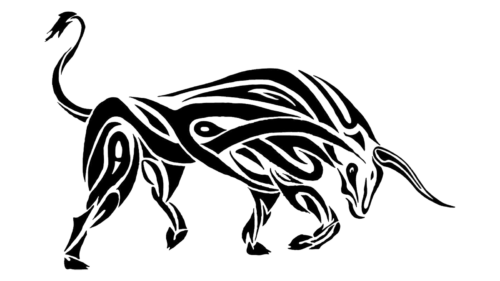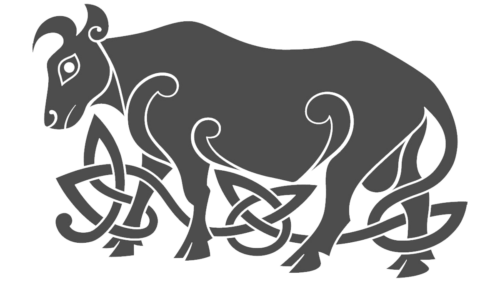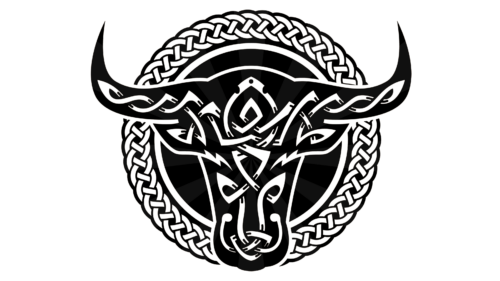Celtic symbols, with their deep roots in ancient European history, present a fascinating tapestry of mystical and cultural significance. These symbols, emanating from the enigmatic world of the Celts, have been subjects of intrigue and admiration across centuries. Among the myriad of symbols, a few, like the intricate Knotwork, symbolizing the interconnectivity of life, and the Dara Knot, representing strength and wisdom, have garnered attention. However, our focus here shifts to an equally intriguing but less explored symbol: The Bull.
Celtic symbols, rich in their diversity and depth, offer a glimpse into the intricate tapestry of Celtic culture. Among these symbols, the Boar and the Deer hold special significance, akin to the revered Bull. The Boar, a symbol of bravery and fierce protection, and the Deer, representing grace and spiritual enlightenment, both embody key aspects of the Celtic worldview. These symbols illustrate the Celts’ profound reverence for nature and their belief in the interconnectedness of the physical and spiritual realms.
The Bull, in Celtic lore, is not just an animal depiction but a robust symbol resonating with meanings of might, prosperity, and virility. This symbolism is deeply ingrained in the Celtic cultural ethos, reflecting their reverence for nature and its creatures. The Bull’s image, often associated with robustness and vitality in Celtic myths, goes beyond the physical, venturing into realms of spiritual and symbolic significance.
In some ancient Celtic ceremonies, the Bull was revered not just as a symbol but almost as a deity, with rituals centered around ensuring its well-being, reflecting its paramount importance in Celtic society.
In ancient Celtic societies, the Bull held a place of honor. Its depictions are found in numerous Celtic artifacts, from stone carvings to ornamental metalworks. This veneration stems from the Bull’s crucial role in agrarian lifestyles, where it was indispensable for plowing fields and ensuring a bountiful harvest. Its significance transcended the every day, with the Bull often being a symbol of divine power and strength in Celtic mythologies and epics.
A fascinating facet of the Bull’s imagery in Celtic culture is its representation as a guardian of wealth and a symbol of bounteousness. The creature’s formidable presence in art and legend underscored its importance as a bearer of prosperity and as a protective entity. Moreover, the Bull’s frequent appearances in Celtic folklore and legends, often as a mystical creature of great power, highlight the Celts’ deep-rooted belief in the interconnectedness of the natural and the supernatural. Celtic symbols and their meanings encompass a broad spectrum of interpretations, reflecting the complexity and depth of the Celtic cultural and spiritual worldview. These symbols were not mere artistic expressions; they were integral to the Celts’ understanding of the world, offering insights into their perceptions of life, nature, and the divine.
To further elucidate the multifaceted nature of the Bull in Celtic symbolism, here is a detailed list of its varied representations:
- Symbol of unyielding strength and endurance, as evident in Celtic battle tales.
- Emblem of fertility and agricultural wealth, crucial in sustaining Celtic communities.
- Spiritual symbol, often regarded as a guide in mystical rituals and folklore.
- Representation of nobility and authority, linked to Celtic gods and kings.
The Bull symbol in Celtic tradition offers a rich and multifaceted perspective into the Celtic way of life. Its enduring appeal and significance are reflective of the deep-seated values and beliefs of the Celtic people. These symbols, including the Bull, are not relics of a bygone era but living representations of a culture that continues to influence and inspire even in the modern world. The Bull, with its multifarious meanings, remains a powerful symbol of the enduring legacy of Celtic symbolism.
The Bull Tattoo
The Celtic Bull, a symbol rich in history and cultural significance, has found a contemporary expression in the form of tattoos. A Celtic Bull tattoo is not just a decorative body art; it is a powerful emblem that carries the deep-seated meanings and values of ancient Celtic traditions into the modern world.
In tattoo art, the Celtic Bull is often depicted with intricate knotwork or interlacing patterns, characteristic of Celtic design. These complex designs enhance the symbolic meaning of the Bull, representing strength, fertility, and a connection to the earth. People choose this tattoo to embody the Bull’s attributes of power, resilience, and its role as a guardian of wealth and prosperity. The design can vary from simple and elegant to elaborate and detailed, each variation capturing a different essence of the Celtic Bull’s symbolism.
Furthermore, a Celtic Bull tattoo is often imbued with personal significance. For some, it’s a tribute to their heritage and a connection to their ancestral roots. For others, it’s a symbol of their own strength and endurance through life’s challenges. The tattoo serves as a constant reminder of the qualities that the Bull symbolizes – courage, stability, and the ability to stand firm against adversity. It’s a testament to the enduring legacy of Celtic symbols and their relevance in contemporary times, as they continue to inspire and represent personal and cultural identities.









